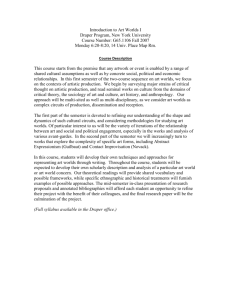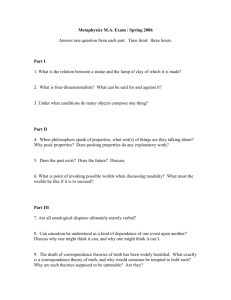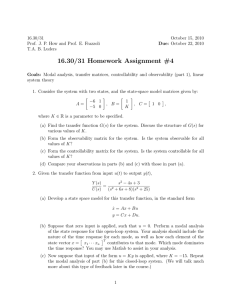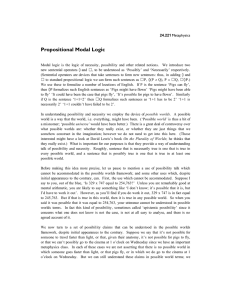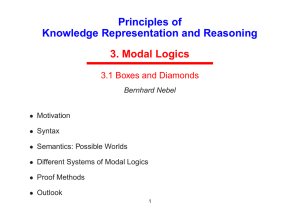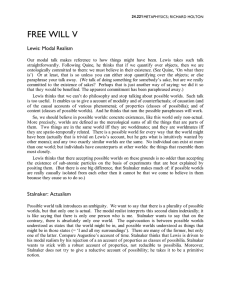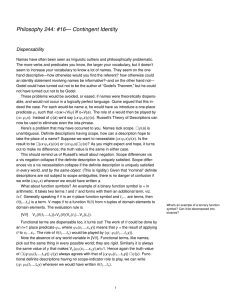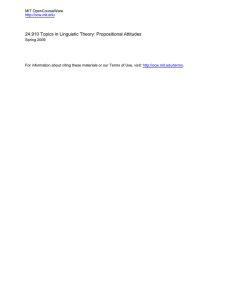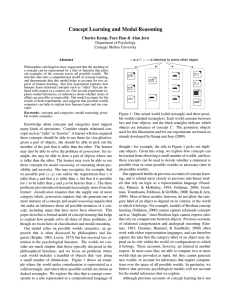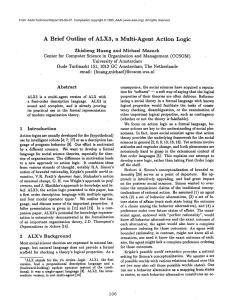Philosophy 244: Modal Logic—Take Home Final Spring 2015
advertisement
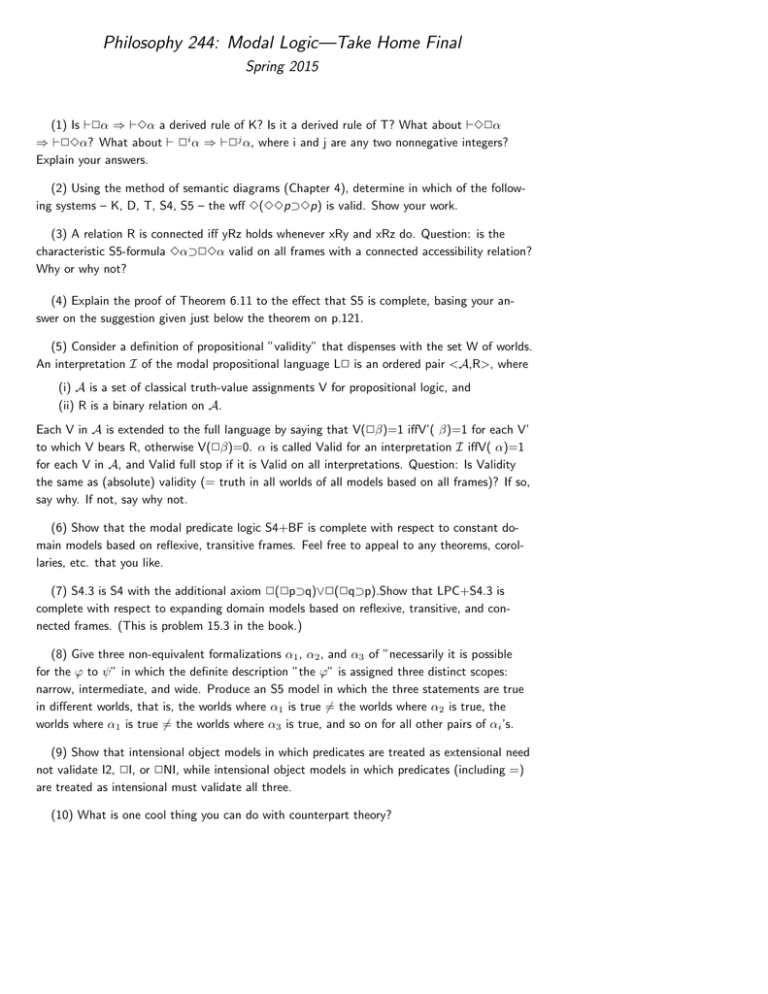
Philosophy 244: Modal Logic—Take Home Final Spring 2015 (1) Is `2↵ ) `3↵ a derived rule of K? Is it a derived rule of T? What about `32↵ ) `23↵? What about ` 2i ↵ ) `2j ↵, where i and j are any two nonnegative integers? Explain your answers. (2) Using the method of semantic diagrams (Chapter 4), determine in which of the following systems – K, D, T, S4, S5 – the w↵ 3(33p 3p) is valid. Show your work. (3) A relation R is connected i↵ yRz holds whenever xRy and xRz do. Question: is the characteristic S5-formula 3↵ 23↵ valid on all frames with a connected accessibility relation? Why or why not? (4) Explain the proof of Theorem 6.11 to the e↵ect that S5 is complete, basing your answer on the suggestion given just below the theorem on p.121. (5) Consider a definition of propositional ”validity” that dispenses with the set W of worlds. An interpretation I of the modal propositional language L2 is an ordered pair <A,R>, where (i) A is a set of classical truth-value assignments V for propositional logic, and (ii) R is a binary relation on A. Each V in A is extended to the full language by saying that V(2 )=1 i↵V’( )=1 for each V’ to which V bears R, otherwise V(2 )=0. ↵ is called Valid for an interpretation I i↵V( ↵)=1 for each V in A, and Valid full stop if it is Valid on all interpretations. Question: Is Validity the same as (absolute) validity (= truth in all worlds of all models based on all frames)? If so, say why. If not, say why not. (6) Show that the modal predicate logic S4+BF is complete with respect to constant domain models based on reflexive, transitive frames. Feel free to appeal to any theorems, corollaries, etc. that you like. (7) S4.3 is S4 with the additional axiom 2(2p q)_2(2q p).Show that LPC+S4.3 is complete with respect to expanding domain models based on reflexive, transitive, and connected frames. (This is problem 15.3 in the book.) (8) Give three non-equivalent formalizations ↵1 , ↵2 , and ↵3 of ”necessarily it is possible for the ' to ” in which the definite description ”the '” is assigned three distinct scopes: narrow, intermediate, and wide. Produce an S5 model in which the three statements are true in di↵erent worlds, that is, the worlds where ↵1 is true 6= the worlds where ↵2 is true, the worlds where ↵1 is true 6= the worlds where ↵3 is true, and so on for all other pairs of ↵i ’s. (9) Show that intensional object models in which predicates are treated as extensional need not validate I2, 2I, or 2NI, while intensional object models in which predicates (including =) are treated as intensional must validate all three. (10) What is one cool thing you can do with counterpart theory? MIT OpenCourseWare http://ocw.mit.edu 24.244 Modal Logic Spring 2015 For information about citing these materials or our Terms of Use, visit: http://ocw.mit.edu/terms.

